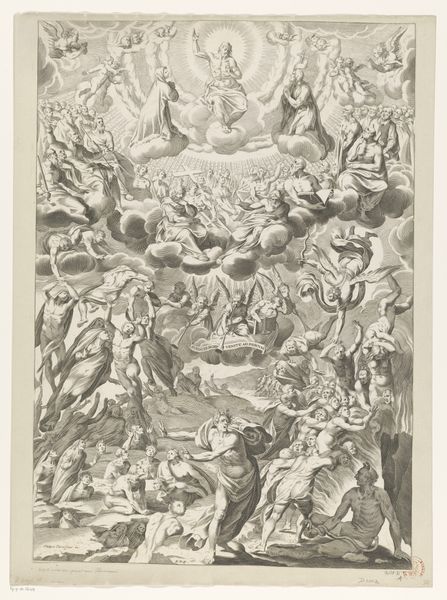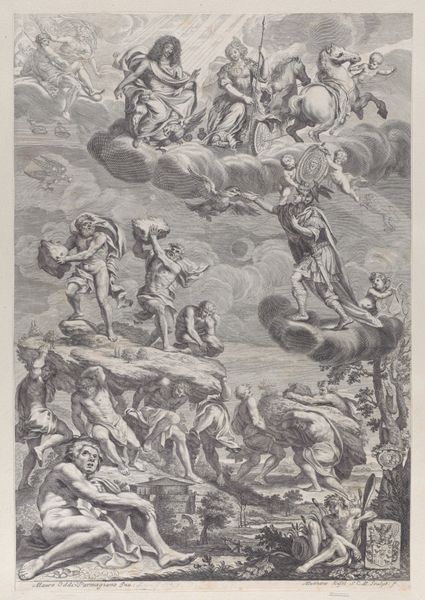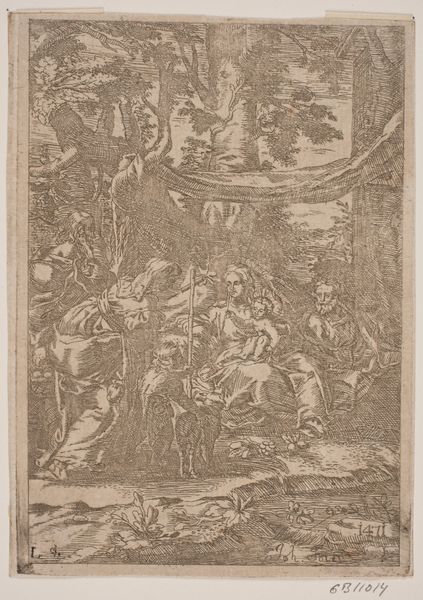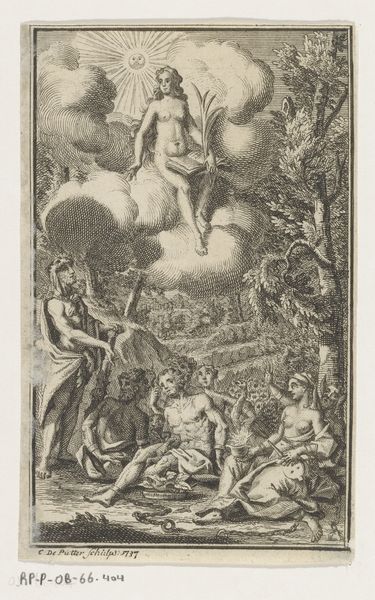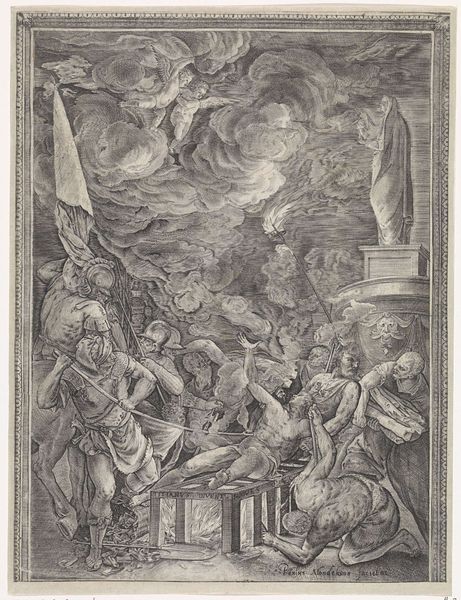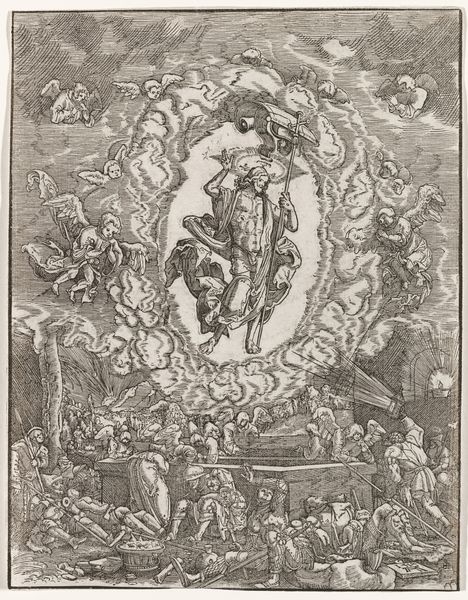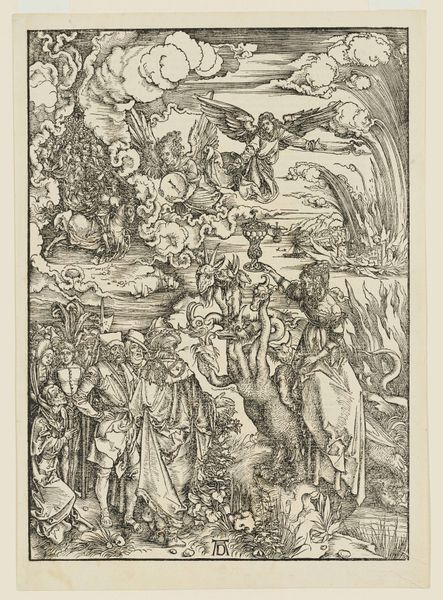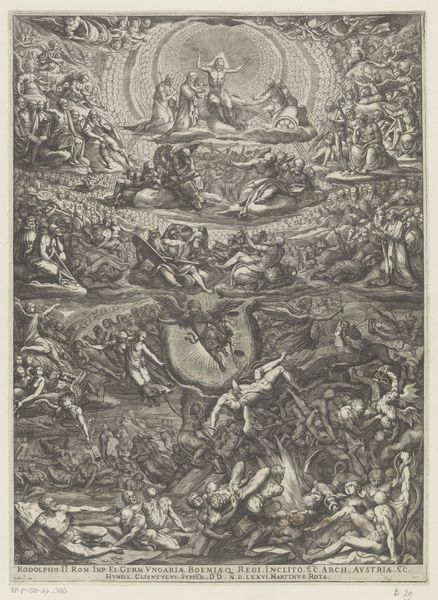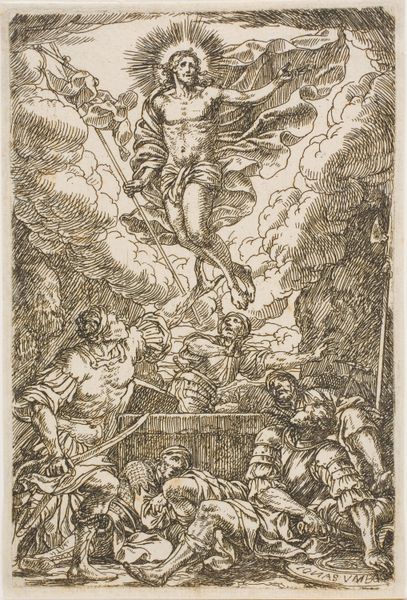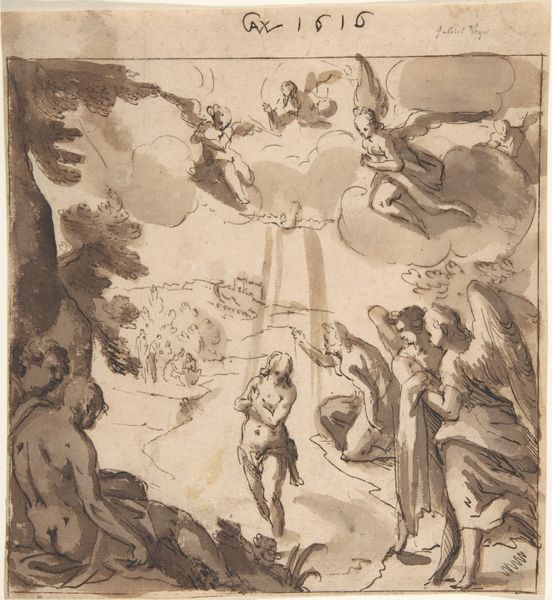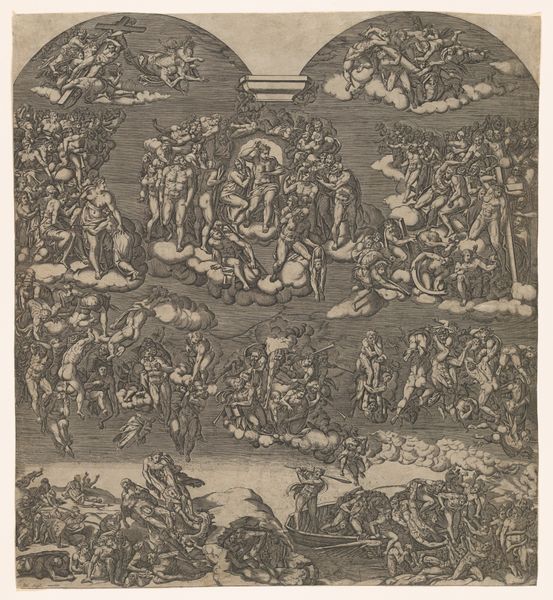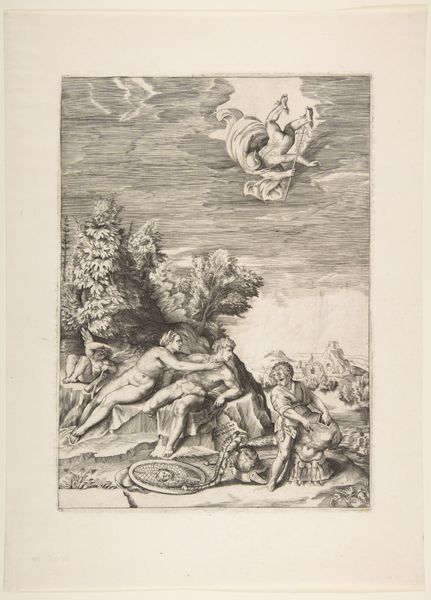
print, engraving
#
baroque
# print
#
figuration
#
line
#
history-painting
#
engraving
Dimensions: height 164 mm, width 99 mm
Copyright: Rijks Museum: Open Domain
Editor: This is "Laatste Oordeel," or "The Last Judgement," an engraving from 1712, currently held at the Rijksmuseum. The sheer number of figures crammed into this composition is a bit overwhelming. What do you see in this piece? Curator: What immediately strikes me is the socio-political context. Prints like this, particularly engravings distributed in Amsterdam, played a key role in shaping public perception during the Dutch Golden Age and beyond. What was the intended audience and message of this particular print, displayed “chez Pierre Humbert”? Editor: You mean, other than a literal interpretation of The Last Judgement, the ultimate sorting of the blessed and the damned? Curator: Exactly. Think about it: prints were often commissioned and circulated to reinforce certain beliefs or values, often related to civic virtue and religious doctrine. This wasn't just about individual salvation, but also about the collective morality of society. The choice of biblical scene itself, the "Last Judgement," might be interpreted in various ways: a warning against earthly temptations, a call for reform during a period of perceived social or political instability, a reminder of religious authority. The fact that the figures are very generalized, rather than individualized portraits, reinforces that we're meant to consider a broader societal reckoning. What purpose does it serve to remind citizens that God is the ultimate judge? Editor: So it's less about a literal depiction and more about the print functioning as a social and perhaps even political tool, like a visual sermon? It makes me think about public displays of morality. Curator: Precisely! Consider how the imagery reinforces societal hierarchies, and the consequences for transgressing established norms. How does this engraving serve institutional powers in shaping civic discourse at the time? Editor: It's fascinating to think of this engraving not just as a work of art, but as a form of propaganda, however subtle. Curator: Indeed, considering art as an integral part of social history allows for a much deeper and nuanced understanding of its significance.
Comments
No comments
Be the first to comment and join the conversation on the ultimate creative platform.
